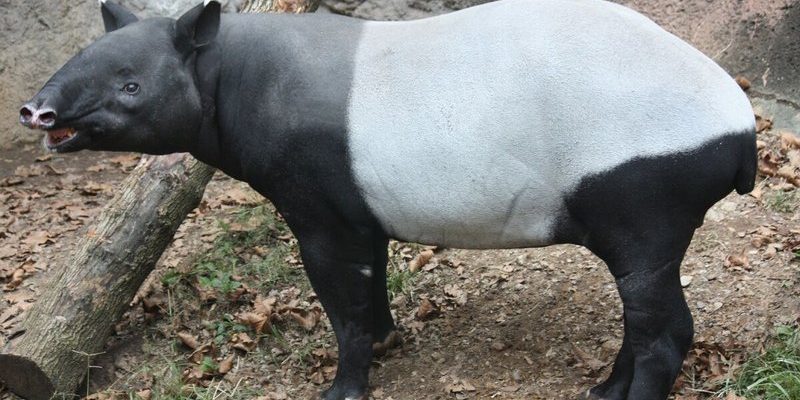
The mountain tapir, or *Tapirus pinchaque*, is one of four living tapir species, and it’s primarily found in the high-altitude regions of Colombia, Ecuador, and northern Peru. While they might look somewhat familiar to us, their evolutionary journey is anything but ordinary. Let’s take a step back in time and see how the mountain tapir came to be, diving into their history and the challenges they face today.
What Are Tapirs?
To appreciate the mountain tapir’s evolution, we first need to understand what tapirs are. Tapirs are large, herbivorous mammals that belong to the family Tapiridae. They’re known for their stout bodies, short legs, and elongated snouts, which they use to browse on leaves, fruits, and aquatic plants. Picture a cute, cuddly creature that spends most of its time munching in the underbrush.
Interestingly, tapirs are often referred to as “living fossils.” They have been around for about 50 million years! Despite their long history, they still resemble their ancient ancestors quite closely. Tapirs share a common ancestor with horses and rhinoceroses, making them part of a unique evolutionary branch of the Perissodactyla, or odd-toed ungulates. So, when you look at a mountain tapir, you’re seeing a piece of ancient history!
The Ancestry of Mountain Tapirs
Mountain tapirs diverged from their relatives around 20 million years ago. They share ancestry with other tapir species, including the Brazilian tapir, Baird’s tapir, and the Malayan tapir. Imagine a family tree where these four species are all cousins. Each has adapted to different environments over time, resulting in their unique appearances and behaviors.
One of the most striking differences lies in their habitats. While other tapirs thrive in lowland forests and swamps, mountain tapirs inhabit the cool, often cloudy highlands. They’ve adapted physically to this rugged terrain: their thick fur helps them withstand the chilly weather, and their sturdy legs allow for navigating steep slopes. It’s like they’re the mountain climbers of the tapir family!
Adaptations to High Altitude
Living in mountainous regions isn’t just about surviving; it requires some special adaptations. Mountain tapirs have developed broader, more robust hooves to help them grip the rocky, uneven ground. Imagine trying to walk on a steep path in flimsy shoes—your feet would slip, right? But with their sturdy hooves, mountain tapirs can trek through their habitats with ease.
Another adaptation is their diet. These tapirs graze on high-altitude vegetation, such as grasses, leaves, and fruits that are often found in the cloud forests. Because these resources can be scarce, mountain tapirs have evolved to be effective foragers. They can travel long distances to find food, which is essential for their survival. This ability to adapt not only helps them thrive but also supports the ecosystems they inhabit.
Conservation Status and Threats
Despite their remarkable adaptations, mountain tapirs face significant challenges. They are currently listed as endangered, primarily due to habitat loss and poaching. Deforestation for agriculture and urban development has fragmented their habitats, isolating populations and making it harder for them to find mates and food. Imagine living in a world where your home is slowly being taken away—this is the reality for mountain tapirs.
Additionally, poaching poses a significant threat. While hunting them is illegal in many regions, illegal hunting still occurs. Their thick hides and meat can be tempting targets for poachers. Conservation efforts are crucial to ensuring that these gentle giants don’t disappear from our planet. Many organizations are working to protect their habitats and raise awareness about their plight.
Conservation Efforts in the Andes
Efforts to conserve mountain tapirs are underway, focusing on habitat preservation and local education. Various organizations are collaborating with communities in the Andes to promote sustainable land use practices. By working together, they aim to reduce the impact of deforestation and offer local farmers alternative livelihoods that don’t harm tapir habitats.
Protected areas, such as national parks and reserves, are being established to safeguard these animals and their ecosystems. In these areas, legal protections against hunting have been enforced rigorously. Imagine a safe haven where mountain tapirs can roam free without fear—that’s the goal of these conservationists!
Education plays a crucial role as well. Teaching local communities about the importance of tapirs in their ecosystems helps foster a sense of pride and stewardship. When people understand how these animals contribute to their environment, they’re more likely to help protect them.
The Role of Mountain Tapirs in Ecosystems
Mountain tapirs are more than just adorable creatures; they play a vital role in their ecosystems. As herbivores, they help in seed dispersal. When they munch on different fruits and plants, they often carry seeds in their droppings. This process helps plants grow in new regions, promoting biodiversity. Think of them as nature’s gardeners, spreading life throughout their mountainous homes.
Additionally, their grazing can help manage vegetation. By keeping plant growth in check, they create open areas for other species to thrive. This balance is essential for maintaining healthy ecosystems. If mountain tapirs were to disappear, we might see significant changes in the plant communities and animals that rely on those plants for food and shelter.
The evolution of the mountain tapir is a fascinating story that spans millions of years. From their ancient ancestors to the unique adaptations that allow them to live in high-altitude environments, these creatures remind us of the interconnectedness of all life. However, the mountain tapir’s survival hangs in the balance due to habitat loss and poaching.
As we learn more about these remarkable animals, it’s essential to support conservation efforts aimed at protecting their habitats and ensuring they continue to roam the Andes for generations to come. After all, every creature has a story to tell, and the mountain tapir’s tale is one that deserves to be cherished and preserved. Let’s work together to ensure that this gentle giant remains a part of our natural world, thriving in the misty cloud forests where it belongs.

